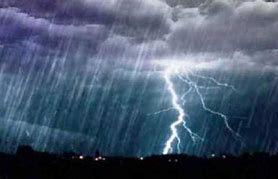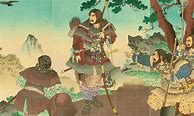The Fastest Meme Generator on the Planet. Easily add text to images or memes.
No Spacing Top & Bottom Top Bottom
Auto Color White Black Custom
5% 10% 15% 20% 25% 30% 35% 40% 45% 50% 55% 60% 65% 70% 75% 80% 85% 90% 95% 100%
← Background color. Click to change.
Note: font can be customized per-textbox by clicking the gear icon.
Tip: If you log in, your memes will be saved in your account
Generate Reset Save Text Box Settings
Color changing chrysanthemum with four cores by Sugano Fireworks (Fukushima)
This multilayered firework comes with two, three, four, or even five rings arranged inside its shell. The hoshi in each layer transform into two or three colors, resulting in a gorgeous bloom that produces between six and twelve colors in a brief two seconds before fading forever into the night sky. Japanese artistic fireworks--the envy of the world—don’t get much better than this.
Fireworks photograph:Kiminari Onozato
Fireworks are more than a spectacular light show in Japan. The art of Hanabi dates back centuries and today, firework festivals are a major attraction. Table of contens:
Intro A Brief History of Japanese Fireworks What are Japanese Fireworks? Top 10 Fireworks Festivals in Japan Bonus Tips IntroFireworks are big in Japan, and have a long, colourful history going back to the Edo Period. Today, they have become synonymous with both summer festivals and New Year celebrations. In fact, they are so popular they have inspired festivals of their own, as well as spectacular competitions between Japanese fireworks experts, each trying to create a bigger and better display than the last. When you visit Japan, why not celebrate the trip of a lifetime with a visit to a fireworks festival? We’ll run through 10 of the best from across Japan below, and tell you how to get there with your Japan Rail Pass. In Japan, fireworks are more than just a light show, they’re an art form known as ‘hanabi’ which literally translates as ‘flower fire’. They are not just for creating dazzling displays, but as we will go on to explain, they have a deeper significance relating to Japan’s heartfelt appreciation for ephemeral beauty. A Brief History of Japanese FireworksAs mentioned, the word ‘hanabi’ in Japanese means ‘flower fire’ - a very apt and beautiful description for fireworks, which hints at their cultural significance in Japan. Hanabi first became popular during the Edo period as a symbol and celebration of spiritual beauty. They have also been historically used to ward off evil spirits, and in the modern era have become synonymous celebrations, from summer festivals and major sporting & music events, through to bringing in the New Year.
Firework shell sizes and exploded height
Top 10 Fireworks Festivals in Japan
Arguably the oldest and most historic display in Japan, Tokyo’s Sumida River Fireworks Festival dates back to the 1700s (as we mentioned above). The festival usually takes place on the last Saturday in July each year along the river. You can reach the area via Asakusa Station. The festival is also close to Tokyo’s famous Sensoji Temple. Read our guide to Visiting Asakusa for more about the area. Speaking of shrines and temples, don’t miss the fireworks at Osaka Tenjin Festival either - another great destination.2.) Lake Suwa Festival
There’s something beautiful about seeing fireworks reflecting in the still water of a beautiful lake or river - perhaps that is why there are so many festivals based at these locations? The Lake Suwa Festival in Suwa City, Nagano Prefecture, launches the highest number of fireworks of any festival in Japan - 40,000 - and was originally founded in 1949 to lift the spirits of the Japanese people after the end of the Second World War. Today, it attracts half a million visitors each year. Another top recommendation for fireworks over water are those over Miyajima Island around Itsukushima Shrine - Japan’s famous floating torii gate and one of the most iconic spots in Japan. Fireworks take place at Miyajima in mid-August each year. Find out more about the floating torii gate in our Ultimate Torii Gate Tour of Japan. 3.) Biwako Fireworks Festival, Shiga Prefecture
Biwako is the largest lake in Japan and makes a beautiful backdrop to a huge fireworks display. Although Biwako is in Shiga Prefecture, it’s only half an hour from Kyoto, one of Japan’s most famous cities and a cultural hotspot. Kyoto is also easily accessible via other cities across Japan, such as Tokyo and Osaka, using your JRailPass and the Shinkansen bullet train. For more on Kyoto read our guide to Exploring the Higashiyama district.4.) Kumano Fireworks Festival
This unique ‘fireworks on the sea’ festival sees pyrotechnics launched from a boat creating a spectacular sight over the sea and coast at Shichirimihama, Kumano City, Mie Prefecture. It is another festival with a long and proud history dating back 300 years. 5.) Toyota Oiden Festival
As well as dazzling fireworks, Toyota Oiden Festival is known for its lavish costumes, dancing, and music. It is held on the last Sunday of July each year in Aichi Prefecture.6.) Omagari National Fireworks Competition
One of Japan’s biggest and most spectacular fireworks festivals, Omagari National Fireworks Competition sees up to 800,000 visitors flock to Omagari district in Daisen City, Akita Prefecture. Famous for its storytelling and visual themes, this high-level display is often said to crown the No.1 fireworks expert in Japan. The competition and festival is one of only two events in Japan to receive a Prime Minister’s Award. 7.) Akagawa Fireworks Festival
Based at Akagawa riverside in Yamagata prefecture, this festival features more than 12,000 fireworks and attracts some of Japan’s most skilled pyrotechnic experts8.) Nagaoka Fireworks Festival
This is one of three famous fireworks shows held in Niigata Prefecture and 2021 will see its 75th anniversary. Together the three shows are known as the Fireworks Festivals of Echigo. They are the Nagaoka Fireworks Festival, Gion Kashiwazaki Festival, and Katakai Festival. The region loves fireworks so much, it even has winter displays too - the Echigo-Tsumari Snow Fireworks and the Tokamachi Snow Festival. Nagaoka Fireworks Festival is arguably the biggest of all and takes place over two nights in August. It features the largest fireworks shells in Japan - Sanjakudama shells - and has a signature firework called the Phoenix Shell - a symbol of rebirth and recovery introduced after the 2004 Niigata earthquake. Read our guide to Visiting Niigata Prefecture with the JR Pass for more on this area9.) Kachimai Fireworks Festival
The word ‘kachimai’ roughly translates to ‘every win’ and everyone does win when it comes to this amazing fireworks festival along the Tokachi river in Hokkaido - Japan’s northernmost island. The festival takes place near Furano and the Tokachi mountains. Furano is famous for its skiing in winter and also for its beautiful lavender in the summer. Read more in our guide to Furano - Japan’s Lavender Town. Meanwhile, for more on Hokkaido read our Five-Day Hokkaido Rail Itinerary. Hokkaido can be reached directly by rail from Tokyo, with a one-way trip taking roughly four hours using the Hokkaido Shinkansen. The trip is fully covered by the Japan Rail Pass. Once in Hokkaido, there are a number of ways to reach Furano. If travelling from Tokyo, you can transfer at Sapporo (Hokkaido’s capital), Shin-Hakodate-Hokuto, or Takikawa. 10.) Atami Maritime Fireworks
This festival in Atami Bay was also founded to raise morale after a typhoon and fire in 1949/1950 and has been going strong ever since. Atami Bay is surrounded by mountains, and it is said that the fireworks echo twice as loud because of the natural insulation.
Japan’s world-renowned artistic fireworks
The famed shogun Tokugawa Ieyasu was the first person to ever witness a firework in Japan. Ever since then, the Mikawa area of Aichi Prefecture has been a thriving fireworks region. Today, many other regions across Japan—most notably Akita, Miyagi, Fukushima, Ibaraki, Niigata, Yamanashi, Nagano, Tokyo, Kanagawa, Shizuoka, Fukuoka, Oita, and Kagoshima—are backed by a long and rich history of firework-making traditions. Meanwhile, the origins of Japanese artistic fireworks for the common people are said to date back to the Ryogoku Kawabiraki Fireworks of 1733. The year before, famine and disease had spread throughout the country, and many people died. Tokugawa Yoshimune decided to hold a festival as a memorial to the souls of the departed and to pray for the eradication of disease. It was dedicated to the water gods and scheduled for the first day of the boating season, known as kawabiraki no hi. Eventually, a fireworks festival came to be held every year on kawabiraki no hi, a tradition that led to the modern-day Sumidagawa Fireworks Festival. The first fireworks expert to make a name for himself at the festival was Yahei Kagiya. Later, a fireworks expert called Ichibei Tamaya would branch off from the Kagiya family and make his mark in Edo. To this day, the Japanese call out “Tamaya!” and “Kagiya!” when they watch a fireworks show.
Color changing chrysanthemum with four cores by Beniya Aoki Fireworks (Nagano)
Elaborate techniques are used to make this ultimate artistic Japanese firework, which features four cores—each of a different color. The hoshi in each core transform, with the four layers resulting in multiple transformations in an instant.
“Seating” (tama no suwari)
All firework shells launch at a different height, depending on their number. Ideally, they burst at the moment they reach their highest point. Fireworks that achieve this are said to be ”well-seated”.
What are Japanese Fireworks?
Fireworks are available all over the world, but Japan has become famous for its expertise, craftsmanship, and spectacular displays. There are also several types of fireworks that have become closely linked to Japan. These include:
Huge world-record holding fireworks which measure 1.2 metres and weigh hundreds of kilograms. As you might expect, the resulting explosion is a sight to see!
These fireworks take their name from the famous US waterfall and are essentially sparklers that cascade downwards from a bridge.
These mines burst into beautiful patterns in the sky, from traditional stars to more contemporary shapes like smiley faces, hearts and even Anime characters.
Top 10 Fireworks Festivals in JapanJapan loves festivals just as much as it loves fireworks. Festivals known as matsuri take place all over Japan for a wide range of reasons, from religious celebrations at shrines to honouring the dead, fertility, star crossed lovers - the list goes on and on. One of the common factors between all of these diverse festivals is that they are often fun, colourful, and bring together family, friends, and visitors. Japanese festivals have a carnival atmosphere, with food, music, games, and more, and represent a great way to experience the real Japan. Attendees even wear special clothing known as a ‘Yukata’ which is a casual summer kimono and ‘geta’ sandals. And of course, when it comes from getting from A to B in Japan, and from one festival location to another, there’s no better or more cost-effective way than the JR Pass. Of all Japan’s festivals, those involving fireworks might just be the most spectacular. Here is our list of recommendations: 1.) Sumidagawa Fireworks Festival, Tokyo
Characteristics of Japanese fireworks (Taken from Introduction to Fireworks by the Japan Pyrotechnics Association, FY2017 edition)
Japanese fireworks, particularly its well-known bursting cored chrysanthemum fireworks, are said to be the most exquisite and beautiful in the world. Their three main characteristics are listed below.
Japanese firework shells have a spherical shape, while Western fireworks are typically cylindrical. Japan also packs its shells with spherical stars, versus cylindrical Western stars. These Japanese hoshi feature layers of differently colored explosives, much like Japan’s old-fashioned kawaridama candy balls that have rings of color inside.
As the figure on the right shows, a Japanese firework packs hoshi spherically into the shell (container) with a bursting charge (the explosive that breaks apart the firework) in the center. The outside of the shell is made from multiple layers of durable paper that are pasted on and then dried. Striking the perfect balance between the force of the blast charge and the way the paper is glued is what allows the firework to burst into a perfect sphere with evenly-scattered hoshi. If the paper is not glued evenly, the firework will not explode symmetrically, resulting in a distorted flowering.
Cylindrical fireworks do not scatter stars in all directions, so they are not perfectly spherical when they burst. Western fireworks also have different coloration than Japanese fireworks, and are known for unusual patterns such as those that burst multiple times in the air. The smaller fireworks are equal in terms of their brilliance, but when they exceed a No. 5 (15 cm) shell, the Japanese fireworks achieve significantly more exquisite and beautiful expressions.
Japanese fireworks experts have also been able to perfect the techniques to create two or three concentric cores (cored fireworks) through their skillful use of Japanese paper. The ability to achieve an extraordinary level of harmonious beauty, where the firework appears perfectly spherical from all angles, with excellent color transformation and a clean disappearing point, is attributed to Japan’s unique aesthetic and superior craftsmanship. They represent the crystallization (and indeed, they can be as perfect as crystals) of the wisdom and tireless effort of generations of firework artisans. In recent years, Japan’s pyrotechnicians have been challenging themselves to create four-core, or even five-core fireworks, proving that there is no limit to their artistic curiosity and achievements.
Source:http://www.hanabi-jpa.jp/data/booklet.html
A Brief History of Japanese Fireworks
However, their use was not always celebratory. One of their most famous historical uses was to honour the tragic deaths of those lost to famine and cholera in 1733. The use of fireworks here was not entirely sombre though, as it was also intended as a celebration of life - a role fireworks have continued to perform throughout history. One of modern-day Japan’s most famous fireworks festivals - the Sumidagawa Fireworks Festival - actually dates back to this event.
Following this event, and during the rule of the Tokugawa shogunate, when Japan was at peace, the craftsmanship that had gone into gunpowder was turned towards more peaceful purposes such as fireworks, which from this period on became more closely linked with celebrating the beauty and wonder of life through ‘flower fire’ displays. Today, fireworks are so popular in Japan that rival pyrotechnic groups compete to out-do each other at festivals and competitions. This appreciation has also led to present day Japan’s great love of fireworks as spectacular displays capable of bringing the community - and at times, the whole nation -together.
What are Japanese Fireworks?




